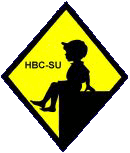
English school uniform through the 1950s tended to be quite formal. Private schools often had quite elaborate uniforms which included rather formal garments like suit coats or blazers, Eton collars, and ties. World War II in particular introduced many formal styles which by the 1960s had caused some more casual uniforms to appear. Even private schools by the 1960s were attempting to simplify the uniform and accepting some casual inovations. Schools where boys once needed permission to take off their blazers were introducing daily uniforms where the boys did not even wear ties. Many schools still require ties and blazers, but there are now many schools wear boys do not wear ties doing the regular school day. A few schools have destinctive casual uniforms such as turtle-neck sweaters. State primary schools for the most part dis not introduce uniforms until after World War II. They did not become common at the primary until the 1960s. As a result, the uniforms adopted tended to be simple, casual styles. This was in part necessary because many parents could not afford the complicated "kit" required at private preparatory and public schools. These casual styles were most common at state primary schools, but they have also been adopted at some preparatory schools.
English school uniform through the 1950s tended to be quite formal. Private schools often had quite elavborate uniforms which included rather formal garments like suit coats, Eton collars, and ties. The blazer was inintiall considered a casual garment to be worn at games. A boy's parents would be given a daunting list of garments and accessories that he needed to bring to school. When the different games (sports) gear was added to this list, a small boy had a huge trunk of items to transpport. It was also a considerable expense. State primary schools did not commonly have uniforms, but parents often followed the formal styles worn at prepartory schoos. So through World War II boys would come to school in peaked caps, ties, short pants suits, and kneesocks.
World War I had a tremendous impact on dress styles in England and other European countries. After the War a trend for casual dress became increasingly apparent. Even so, unifiorms at many schools remained quite formalm even Eton collars persisted for some time. It was not until World War II that casual styles became accepted at mant schools. After World War II private schools introduced many informal styles which by the 1960s had caused some more casual uniforms to appear. Even private schools by the 1960s were attempting to simplify the uniform and accepting some casual inovations. Schools where boys once needed permission to take off their blazers were introducing daily uniforms where the boys did not even wear ties. Many schools still require ties and blazers, but there are now many schools wear boys do not wear ties doing the regular school day.
One casual style which appeared to catch on after World War I was school sandals. These were widely worn at preparatory schools--even prep schools with a very formal uniform. The school sandal became a standard for school wear. Some schools might have the boys put on leather ocsfords for formal occassions, but the school sandal became widely accepted at prep schools as well as primary schools. I'm not quite sure why the sandal became so popular as school wear in England. There were not a lot of options at the time as sneakers were considered only suitable for gum.
|
A few schools have destinctive casual uniforms such as turtle-neck sweaters. State primary schools for the most part dis not introduce uniforms until after World War II. They did not become common at the primary until the 1960s. As a result, the uniforms adopted tended to be simple, casual styles. This was in part necessary because many parents could not afford the complicated "kit" required at private preparatory and public schools. These casual styles were most common at state primary schools, but they have also been adopted at some preparatory schools.
The English school cap was from the beginning a formal rather than functional garment. The flannel absorbed the rain and the short peak (bill) hardly shaded the eyes. (Of course in England water relelant charcteristics would be more important tjhan sun shading.) The cap was widely worn by school boys through the 1940s. Most schools by the 1960s had done away with the cap which the boys generally disliked. They were retained by many prep schools through the 1970s, but gradually even prep schools have largely discarded the venerable school cap.
Many private schools required boys to wear identical overcoats--often made from gaberdine. After World War II, the dufffle coat became a more cassual alternative. Gradually schools began allowing boys to wear their own coats to schools and a variety of more informal, and often colorful styles began to appear.
Eton collars or soft collars and ties were almost always worn by English school boys through the 1950s. This began to change in the 1960s. Many of the primary schools that introduced uniforms in the 1960s did not require ties. Gradually more and more private prep schools introduced a school day uniform with open collars, although day boys might be required to travel to school with their blazes and ties or in some cases even caps.
Related Chronolgy Pages in the Boys' Historical Web Site
[Main Chronology Page]
[The 1880s]
[The 1930s]
[The 1940s]
[The 1950s]
[The 1960s]
[The 1970s]
[The 1980s]
[The 1990s]
[The 2000s]
Related Style Pages in the Boys' Historical Web Site
[Main English school uniform conventions page]
[Main country page]
[Long pants suits]
[Short pants suits]
[Socks]
[Eton suits]
[Jacket and trousers]
[Blazer
[School sandals]
Navigate the Boys' Historical Clothing Web Page
[Introduction]
[Activities]
[Biographies]
[Chronology]
[Cloth and textiles]
[Clothing styles]
[Countries]
[Topics]
[Bibliographies]
[Contributions]
[FAQs]
[Glossaries]
[Satellite sites]
[Tools]
[Boys' Clothing Home]
